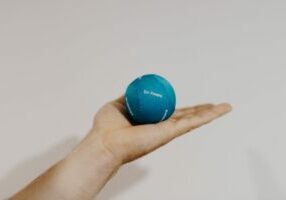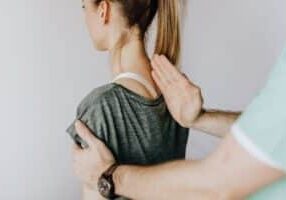
Menopause Weight Loss Myths: What You Really Need To Know About Food & Fitness – Movement is Medicine
- Menopause Weight Loss Myths: What You Really Need To Know About Food & Fitness
- BUILD with Chryssie: Your Personalized Path to Strength & Nutrition
- Weight Loss the Right Way: Protein, Fitness, and Feeling Awesome
- From the Gym to Life: Get Kimo's Tips for a Healthier You
- Rethinking Menopause Care: From Hormones to Holistic Health
The serene backdrop of our backyards often conjures images of relaxation, family barbecues, and a touch of weekend gardening. Rarely do we associate this calming space with potential health hazards, especially to our lower backs. Yet, a recent episode on our very own “Movement is Medicine Show” featuring Dr. Ashley aimed to shed light on this very topic.
So, let’s dive deeper into these potential dangers and, more importantly, the preventive measures Dr. Ashley enlightened us with.
1. Rolling Away the Pain
Many of us have had that niggling backache after a weekend of gardening or cleaning. The culprit? Stiffness and strain. Dr. Ashley introduced listeners to the concept of using tools we often associate with athletes – the lacrosse ball and foam roller. By applying pressure on specific areas, we can alleviate pain, improve mobility, and even prevent future injuries.
These tools work wonders in releasing tight muscles and fascia, allowing a better range of motion and reducing the strain on your lower back. Spending just 5-10 minutes a day can be the difference between waking up refreshed or with an achy back.
2. Break It to Make It
Human beings weren’t designed for hours of uninterrupted repetitive movements. Whether it’s raking leaves, power washing the driveway, or planting flowers, these monotonous activities can cause significant stress to our lower back.
Dr. Ashley’s solution? Taking frequent micro-breaks and incorporating simple stretches. These can range from knee and quad stretches to more dynamic movements. The idea is to vary your activity and give your muscles a brief respite, reducing the risk of overuse injuries.
3. The Power of Cross-Functional Training
Our bodies thrive on varied movements. Dr. Ashley passionately spoke about the significance of cross-functional training, which involves engaging in different types of exercises and movements. This can be as simple as integrating walking, stretching, and weight lifting into your weekly routine.
Such diversity in training ensures that your muscles and joints are prepared for a range of motions, making them more resilient to unexpected strains, especially in the lower back.
4. Watch Out for the Unexpected Culprits
An enlightening segment of the podcast was when Dr. Ashley highlighted activities we often don’t associate with back strain. Even the fittest amongst us can be caught off guard by the toll some backyard tasks take on our bodies.
This isn’t to scare you away from these activities, but rather to make you aware. By understanding the potential risks, you can approach tasks with more caution, ensuring you maintain proper posture and technique, and thereby reducing the likelihood of injuries.
5. Ergonomics: The Backbone of Back Care
While many may associate ergonomics with office setups, the principles are equally vital for backyard tasks. Bending over to pick up leaves or using tools that aren’t suited for your height can gradually strain your lower back.
Dr. Ashley emphasized the importance of mindful movements and investing in ergonomically designed tools, which cater to your body’s mechanics. She also highlighted the need for regular breaks and the importance of paying attention to posture, even in seemingly harmless activities.
Conclusion: Moving Forward Mindfully
As Dr. Ashley poignantly put it, our movement, or lack thereof, directly impacts our health. The lower back, pivotal for so many of our daily actions, deserves attention and care.
The key takeaway from the podcast was simple yet profound: Movement is, indeed, medicine. By incorporating these preventive measures, not only do we protect our lower backs, but we also enhance our overall well-being.
Whether you’re an avid gardener, a weekend DIY enthusiast, or someone just looking to lounge in the backyard, understanding potential risks and how to mitigate them can ensure your outdoor space remains a place of relaxation, not rehabilitation.
Until next time, move with purpose, care for your back, and embrace the medicine of movement!
Happy gardening and safe movements!
Exercises You Can Do at Home after a Visit to the Chiropractic Clinic
Stay active at home with exercises from ‘Exercises You Can Do at Home after a Visit to the Chiropractic Clinic’.
Read MoreAthletic Therapy: A Vital Component in Sports Rehabilitation
Discover the importance of athletic therapy in sports rehabilitation in our insightful blog on ‘Athletic Therapy: A Vital Component in Sports Rehabilitation’.
Read MoreA Comprehensive Guide to Spinal Therapy for Athletes
Discover the benefits of spinal therapy for athletes in our comprehensive guide ‘A Comprehensive Guide to Spinal Therapy for Athletes’.
Read MoreHow Chiropractic Techniques are Advancing in Pain and Injury Treatment
Discover the latest advancements in pain and injury treatment through innovative chiropractic techniques.
Read MoreSpine Rehabilitation: How Corrective Exercises Can Help with Posture and Pain Relief
Discover how corrective exercises in spine rehabilitation relieve pain and improve posture – read more now!
Read MoreCorrective Exercises: Your Secret Weapon Against Chronic Pain
Combat chronic pain with corrective exercises featured in ‘Corrective Exercises: Your Secret Weapon Against Chronic Pain’.
Read More




